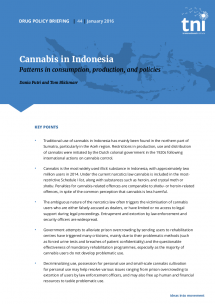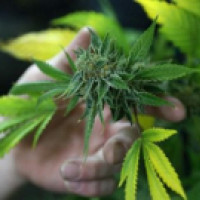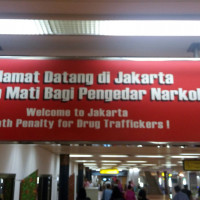Cannabis in Indonesia Patterns in consumption, production, and policies
Fecha de publicación:
Cannabis use has never posed major problems in Indonesia, yet prohibitionist policies prevail. Despite the high prevalence of cannabis use, local or national discussions on cannabis policies are nearly non-existent, exacerbated by strong anti-drug views and public institutions' failure to design and implement comprehensive policies based on evidence.

Autores
Note:
This briefing was originally written and published in English in January 2016, and subsequently translated to and published in Bahasa Indonesia in February 2017. Following further inquiries and recent developments, some details in the document are no longer accurate, such as the following:
- Contrary to what is mentioned on page 14 ("[a]ccountable to the head of the Indonesian police department who directly reports to the president, the BNN performs.."), the Indonesian National Narcotics Board (BNN) in fact reports directly to the President.
- Synthetic cannabinoids locally known as "Gorilla tobacco", which was not yet criminalized at the publication of this briefing (page 21), was recently scheduled as a narcotic drug by the National Narcotics Board and the Ministry of Health.
- Traditional use of cannabis in Indonesia has mainly been found in the northern part of Sumatra, particularly in the Aceh region. Restrictions in production, use and distribution of cannabis were initiated by the Dutch colonial government in the 1920s following international actions on cannabis control.
- Cannabis is the most widely used illicit substance in Indonesia, with approximately two million users in 2014. Under the current narcotics law cannabis is included in the most restrictive Schedule I list, along with substances such as heroin, and crystal meth or shabu. Penalties for cannabis-related offences are comparable to shabu- or heroin-related offences, in spite of the common perception that cannabis is less harmful.
- The ambiguous nature of the narcotics law often triggers the victimisation of cannabis users who are either falsely accused as dealers, or have limited or no access to legal support during legal proceedings. Entrapment and extortion by law enforcement and security officers are widespread.
- Government attempts to alleviate prison overcrowding by sending users to rehabilitation centres have triggered many criticisms, mainly due to their problematic methods (such as forced urine tests and breaches of patient confidentiality) and the questionable effectiveness of mandatory rehabilitation programmes, especially as the majority of cannabis users do not develop problematic use.
- Decriminalizing use, possession for personal use and small-scale cannabis cultivation for personal use may help resolve various issues ranging from prison overcrowding to extortion of users by law enforcement officers, and may also free up human and financial resources to tackle problematic use.



